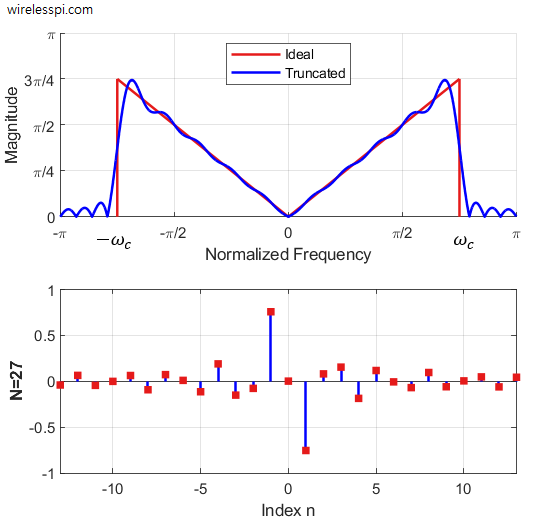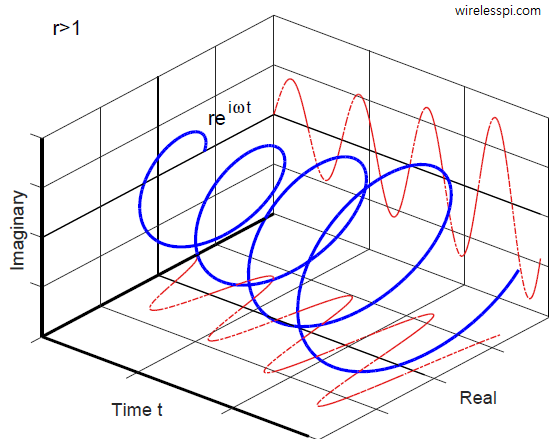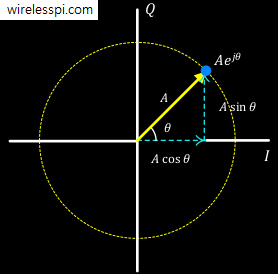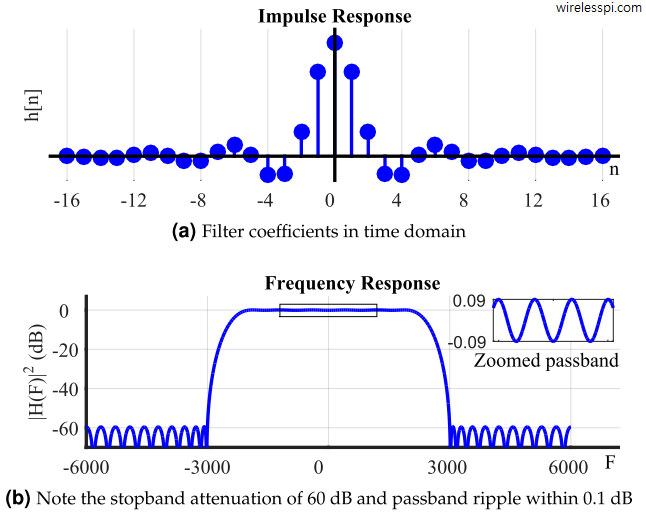Many signal processing algorithms require computation of the derivative of a signal in real-time. Some of the examples are timing recovery, carrier frequency synchronization, FM demodulation and demodulation of LoRa signals. An analog or digital filter that computes such a derivative is known as a differentiator. Before we design such a discrete-time differentiating filter, let us review some of the fundamentals. A Derivative The following quote is attributed to Heraclitus, a Greek philosopher, from 535 BC. Change is the only constant in life. This was brought into the realm of science by Newton and Leibniz. The purpose of science is
Continue reading



![Magnitude of frequency response |H[k]| in response to complex sinusoids at all N frequencies](https://wirelesspi.com/wp-content/uploads/2016/08/figure-introduction-freq-response.png)